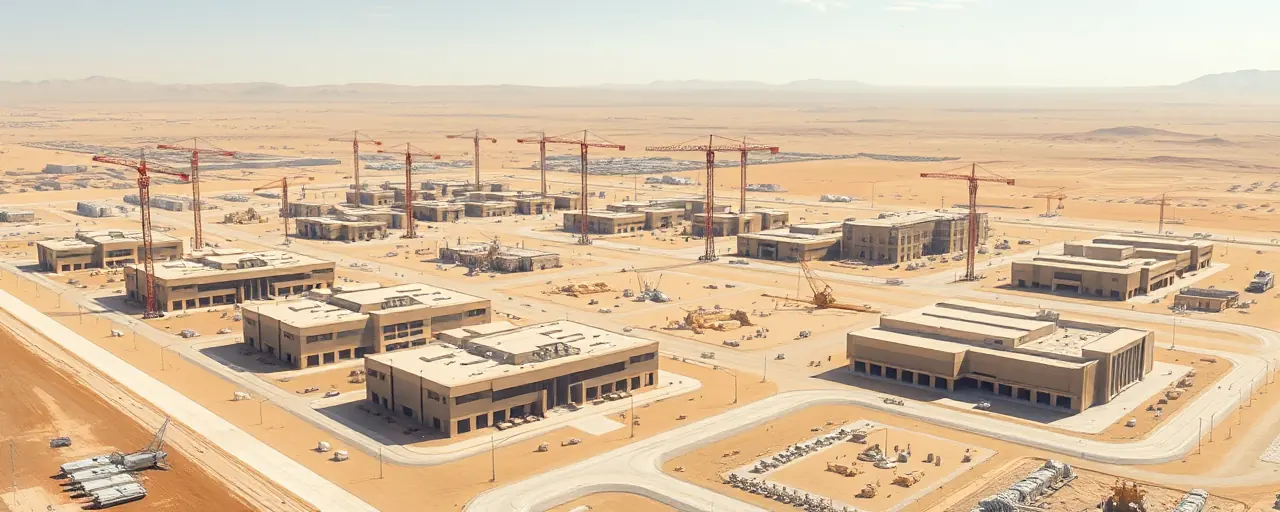A New Wave of Defense Spending
The U.S. Department of Defense is funneling billions into projects aimed at bolstering military readiness and technological edge. Recent contracts highlight a push to modernize infrastructure, advance satellite communications, and strengthen naval defenses. From a new parking structure in Hawaii to cutting-edge radio systems for warships, these investments reflect a broader strategy to prepare for evolving global challenges while supporting allies.
At Fort Shafter, Hawaii, a $57.4 million contract awarded to Nan Inc. will fund a new parking structure, set to be completed by April 2027. This project, managed by the U.S. Army Corps of Engineers, is part of a wave of military construction aimed at improving operational efficiency. Meanwhile, contracts for advanced satellite technology and naval defense systems signal a focus on staying ahead in a fast-changing security landscape.
These efforts come as the Pentagon navigates a complex web of priorities: upgrading aging facilities, integrating new technologies, and meeting the needs of partners abroad. With a defense budget of $849.8 billion for 2025, the U.S. is betting big on projects that promise long-term gains, even as it grapples with delays and supply chain hurdles.
Building for the Future: Military Infrastructure
Military construction projects, like the Fort Shafter parking structure, are critical to supporting U.S. forces. The Department of Defense has earmarked $15 billion for new construction in 2025, with Hawaii alone projected to receive up to $1.79 billion for various initiatives. These projects range from barracks upgrades to advanced training facilities, all designed to enhance readiness and sustainability.
Yet, the road to completion is often bumpy. Over the past five years, the number of delayed military construction projects has more than doubled, rising from 73 to 158. Delays, particularly during the design phase, can inflate costs by millions. The Army Corps of Engineers, which oversees many of these projects, is under pressure to streamline processes and improve oversight to keep initiatives on track.
Despite these challenges, there’s a clear emphasis on modern, energy-efficient designs. New facilities, including those in Hawaii, are incorporating geothermal heating and solar panels to meet sustainability goals. For communities near military bases, these projects also bring economic benefits, creating jobs and boosting local economies.
Reaching for the Stars: Satellite Communications
In the realm of technology, a $15 million contract modification awarded to Northrop Grumman Systems Corp. underscores the Pentagon’s investment in satellite communications. The work, focused on the Evolved Strategic Satellite Communications Rapid Prototyping effort, aims to enhance secure, high-speed data transmission for military operations. Expected to wrap up by July 2025, this project is part of a broader push to keep U.S. forces connected in contested environments.
Satellite technology is evolving rapidly, with innovations like low Earth orbit constellations and laser communications driving progress. These systems offer faster data rates, up to 10 Gbps, compared to traditional radio frequency setups. For the military, this means better real-time coordination across air, land, and sea. However, integrating these technologies comes with risks, including heightened cybersecurity threats as networks become more complex.
The global context adds urgency. Allies are increasingly reliant on U.S. satellite capabilities, while competitors like China are advancing quantum communication systems. The Pentagon’s investments aim to maintain a technological lead, but they also require careful coordination with industry partners to address supply chain vulnerabilities and protect sensitive data.
Strengthening Naval Defenses
On the naval front, contracts awarded to L3Harris Technologies and DRS Laurel Technologies highlight efforts to bolster ship defenses. L3Harris received $11 million to develop and deliver the AN/SRQ-4 Radio Terminal Set, a system that enhances data links for surface combatants. DRS Laurel, with an $8.4 million contract, will support the Ship Self-Defense System (SSDS), which automates responses to airborne threats like anti-ship missiles.
The SSDS is a cornerstone of naval survivability, integrating sensors, missiles, and electronic countermeasures to protect aircraft carriers and amphibious ships. Recent tests on the USS Gerald R. Ford have shown promise in tracking fast-moving targets, with further evaluations planned. These systems are vital in high-threat environments, where split-second decisions can mean the difference between safety and catastrophe.
The Navy’s focus on modular, upgradable systems reflects a shift toward flexibility. By adopting commercial-style software updates, the fleet can adapt to new threats without costly overhauls. Still, integrating these systems across diverse ship classes remains a logistical challenge, requiring close collaboration between contractors and naval engineers.
Global Partnerships and Foreign Military Sales
The L3Harris contract also includes a 9% share for Spain under the Foreign Military Sales program, illustrating the U.S.’s role in equipping allies. In 2024, Foreign Military Sales hit a record $117.9 billion, driven by demand from partners replenishing stockpiles and preparing for regional threats. Major deals, like $18.8 billion for F-15 jets to Israel, underscore the program’s scale.
These sales strengthen alliances while supporting the U.S. defense industry. However, they face hurdles, including manufacturing constraints and the need for faster delivery. Recent reforms, including an executive order signed in April 2025, aim to streamline the process by cutting red tape and prioritizing strategic partners. For countries like Spain, access to systems like the AN/SRQ-4 enhances interoperability with U.S. forces, fostering joint operations.
Balancing Priorities in a Tense World
The latest defense contracts reveal a U.S. military striving to balance modernization with practical needs. Investments in infrastructure, satellite technology, and naval defenses are designed to ensure long-term readiness, while Foreign Military Sales extend U.S. influence and capability to allies. Each project, from a parking structure in Hawaii to advanced ship defenses, plays a role in a larger strategy to address global uncertainties.
Challenges like project delays, supply chain risks, and cybersecurity threats loom large. Yet, the Pentagon’s focus on innovation, sustainability, and international cooperation signals a commitment to staying agile. For communities, allies, and service members, these efforts translate into tangible benefits: stronger bases, better technology, and deeper partnerships in an unpredictable world.
